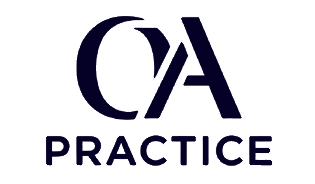D686 Operating Systems for Computer Scientists - Set 3 - Part 1
Test your knowledge of technical writing concepts with these practice questions. Each question includes detailed explanations to help you understand the correct answers.
Question 1: A smartphone operating system detects low battery conditions during heavy processing. Which power management strategy allows critical system functions to continue while suspending non-essential background activities?
Question 2: Enterprise backup systems must minimize data loss while maintaining performance. What technique captures system state at specific moments allowing restoration to exact points without continuous recording?
Question 3: Multiuser systems require fair resource distribution among competing users. Which mechanism ensures no single user monopolizes system resources while maintaining overall system efficiency?
Question 4: Database management systems require atomic operations for transaction integrity. What mechanism ensures that either all operations in a transaction complete successfully or none take effect?
Question 5: Compiler optimizations can interfere with concurrent programming. What memory barrier instruction prevents CPU and compiler from reordering memory operations across the barrier point?
Question 6: Gaming consoles implement specialized scheduling for consistent frame rates. What technique ensures graphics rendering completes within fixed time intervals preventing visual stuttering during gameplay?
Question 7: Forensic analysis requires examining system artifacts after security incidents. What data structure maintains records of all system events including user actions and security violations?
Question 8: Embedded automotive systems require deterministic behavior for safety. What characteristic of hard real-time operating systems makes them suitable for brake control and airbag deployment?
Question 9: Modern browsers isolate web content for security. What technique runs each browser tab in separate address spaces preventing malicious websites from accessing other tabs' data?
Question 10: Distributed databases maintain replica consistency across geographic locations. What approach allows local reads for performance while ensuring writes propagate to all replicas eventually?
Question 11: Application containers need resource isolation without virtual machine overhead. What Linux kernel feature provides process isolation creating separate namespaces for network, process, and filesystem views?
Question 12: Graphics workstations require large memory bandwidth for rendering. What memory architecture provides multiple independent channels to memory banks increasing total bandwidth for parallel access?
Question 13: Version control systems track file modifications over time. What file system feature enables instant creation of file versions without duplicating data until modifications occur?
Question 14: Cryptocurrency mining operations maximize computational throughput. Which process scheduling policy minimizes context switching overhead when running identical computation-intensive tasks?
Question 15: Ransomware attacks encrypt user files demanding payment. What file system feature could help recover encrypted files by maintaining previous versions automatically without user intervention?
Question 16: Edge computing platforms process data near sources reducing latency. What characteristic makes edge operating systems different from traditional cloud operating systems?
Question 17: Scientific computing applications need precise floating-point calculations. What problem occurs when parallel threads perform floating-point operations in different orders producing varying results?
Question 18: Secure communication requires protecting data in transit. At what point does the operating system apply encryption when sending data through encrypted network connections?
Question 19: Live migration moves running virtual machines between physical hosts. What technique enables migration without stopping the virtual machine or disrupting active network connections?
Question 20: IoT devices often lack traditional input methods. What mechanism allows remote configuration and management of headless embedded systems without keyboards or displays?
Need Guaranteed Results?
Our exam support service guarantees you'll pass your OA on the first attempt. Pay only after you pass!
Get Exam Support